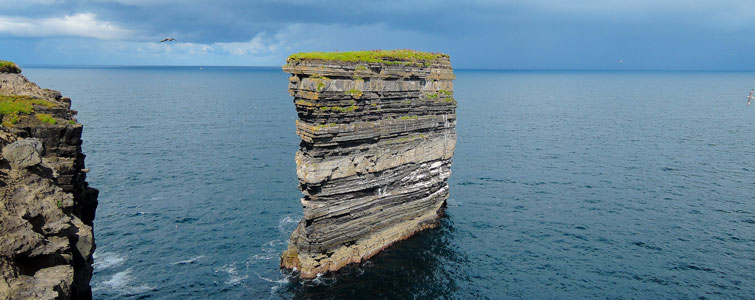The Ceíde Fields - Geology

Ceide Fields Cliffs offer stunning views and give the place something unforgettable, but they are also very important for understanding the geology of this area.
They are 113 m high and the rocks, which dated back 300 million years, are made of limestones and shales. Looking at the rocks, hundreds of layers come into sight. They are regular and horizontal and formed on the bed of the ocean.
The thin dark layers are shale formed by mud deposits, the medium layers are sandstones, while the white thick layers are limestones and made of seashells. Dun Bristle, the sea stack off Downpatrick Head, is a good example of this feature.
On the top of the fields looking to the right, the 255 m high Benwee Cliffs come into view. They give a real sense of impressiveness and from here the Cliffs of Erris start. They date back about 600 million years ago and are completely different from those at Ceide. The stratification of the rocks is vertical or lies at all angles. The high cliffs were formed by the drift of the American continent against Europe as well the similar cliffs at Slieve League in Donegal.
At the foot of Benwee a green headland can be seen. It is cut off from the mainland by a chasm which runs under Belderrig Bay and dates back about 60 million years. This opening of the rocks gives clear evidence of the drift of the American continent towards the West. This process is still going on (2 cm per years) and proves the movement of the American continent towards the Pacific.


